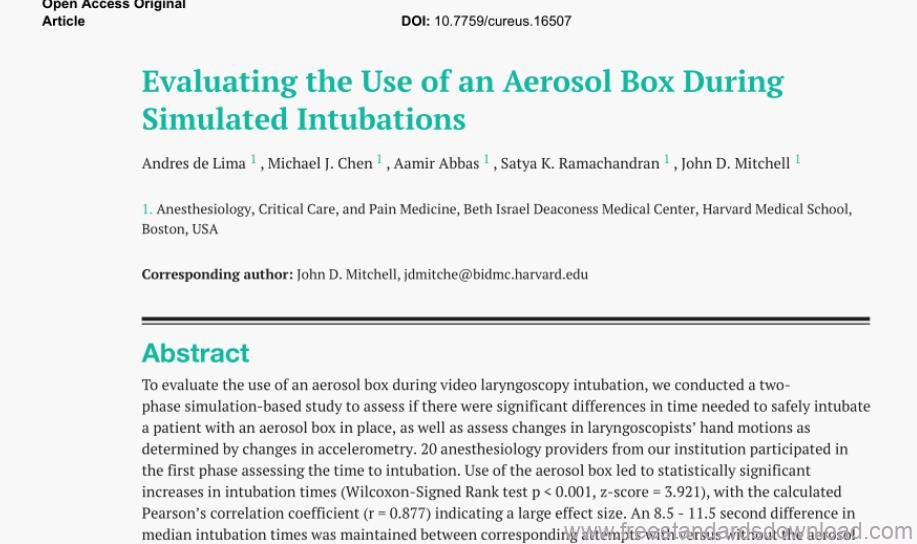
Categories: Anesthesiology
Keywords: simulation, covid-19, intubation box, motion tracking, laryngoscopy
Introduction
The coronavirus COVID-19 pandemic, caused by Severe Acute Respiratory Syndrome Coronavirus-2 (SARSCoV-2), created a unique set of challenges for healthcare systenis. Inadequate access to personal protective equipment (PPE), particularly for healthcare providers in high-risk environments, resulted in the development of alternative barrier methods. An intubation aerosol box was initially described in Taiwan as a means to limit clinicians’ exposure to aerosolized particles when manipulating the airway 11. Almost immediately after this report, aerosol boxes were being replicated, modified, and trialed for use by healthcare teams across the globe. A preliminary study demonstrated theoretical effectiveness in reducing exposure risk to aerosolized particles during intubation by protecting against potential secretions produced during airway management. However, more recent studies have found that laryngoscopists using an aerosol box during intubation may, in fact, be at higher exposure risk to aerosolized particles and that use of the aerosol box can even hinder intubation efforts.

